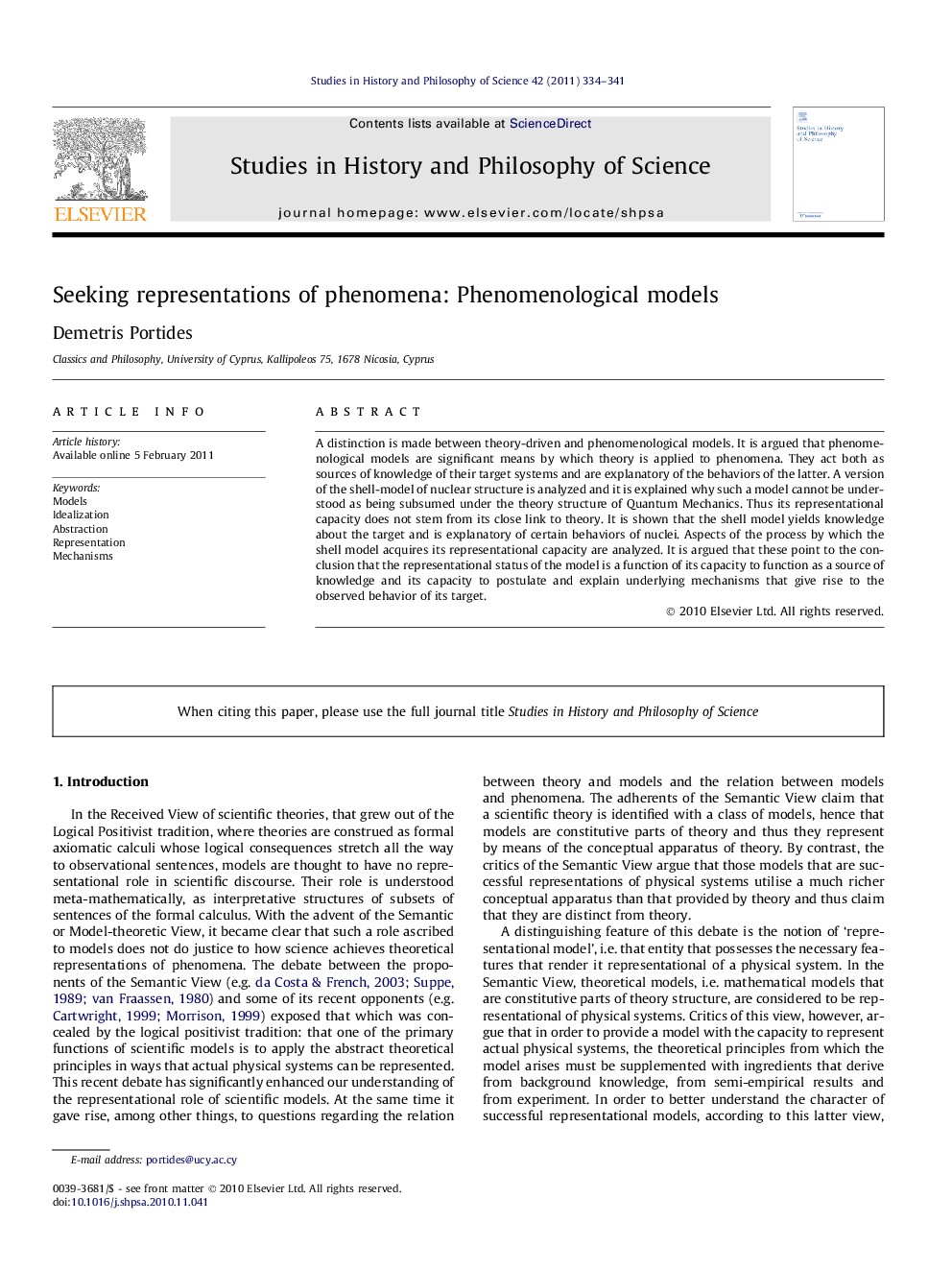| Article ID | Journal | Published Year | Pages | File Type |
|---|---|---|---|---|
| 1160952 | Studies in History and Philosophy of Science Part A | 2011 | 8 Pages |
A distinction is made between theory-driven and phenomenological models. It is argued that phenomenological models are significant means by which theory is applied to phenomena. They act both as sources of knowledge of their target systems and are explanatory of the behaviors of the latter. A version of the shell-model of nuclear structure is analyzed and it is explained why such a model cannot be understood as being subsumed under the theory structure of Quantum Mechanics. Thus its representational capacity does not stem from its close link to theory. It is shown that the shell model yields knowledge about the target and is explanatory of certain behaviors of nuclei. Aspects of the process by which the shell model acquires its representational capacity are analyzed. It is argued that these point to the conclusion that the representational status of the model is a function of its capacity to function as a source of knowledge and its capacity to postulate and explain underlying mechanisms that give rise to the observed behavior of its target.
